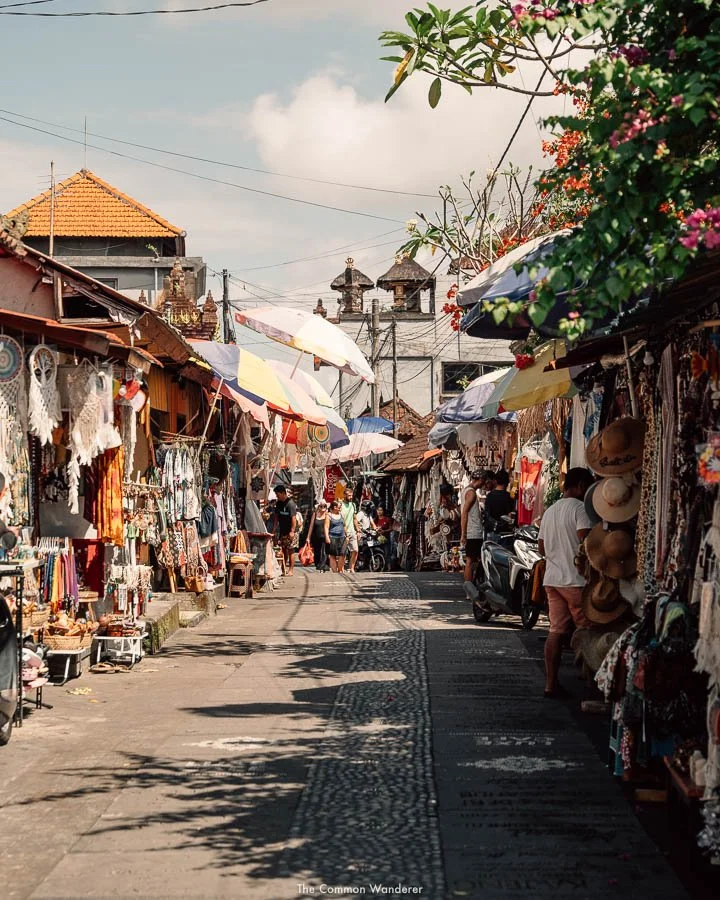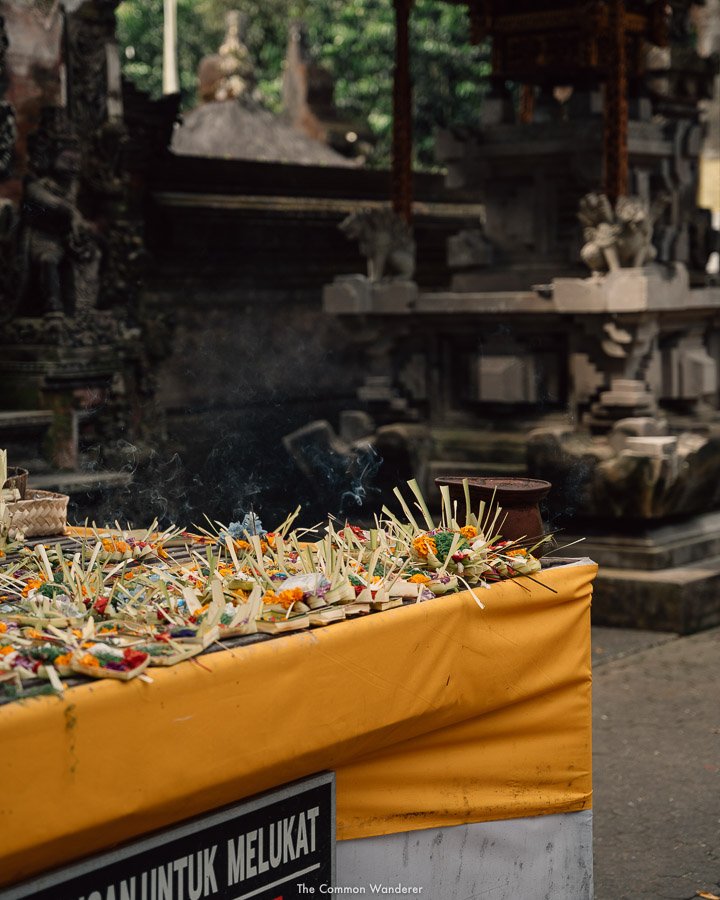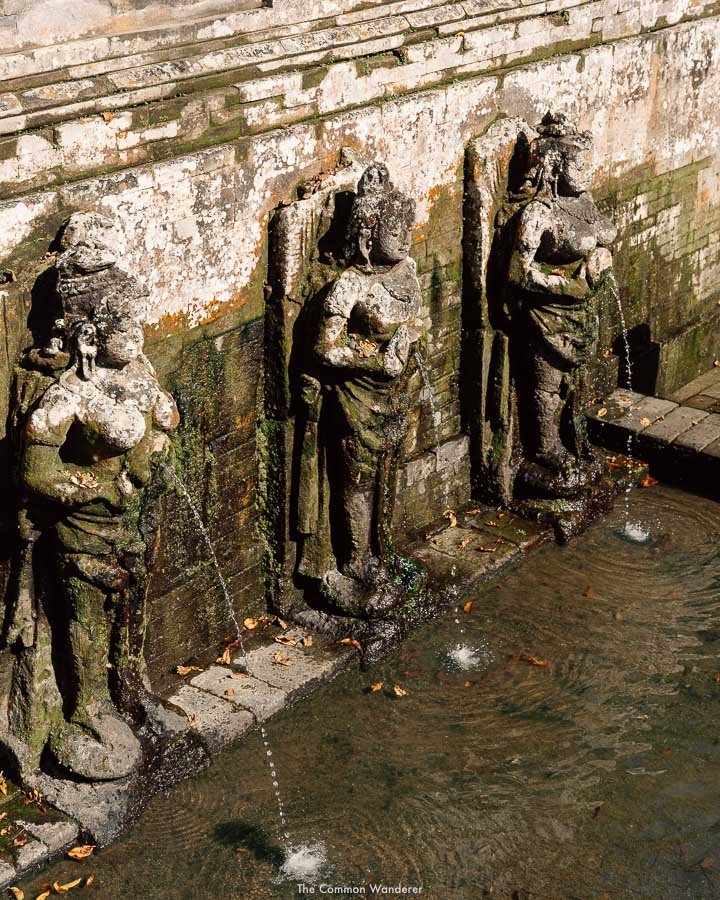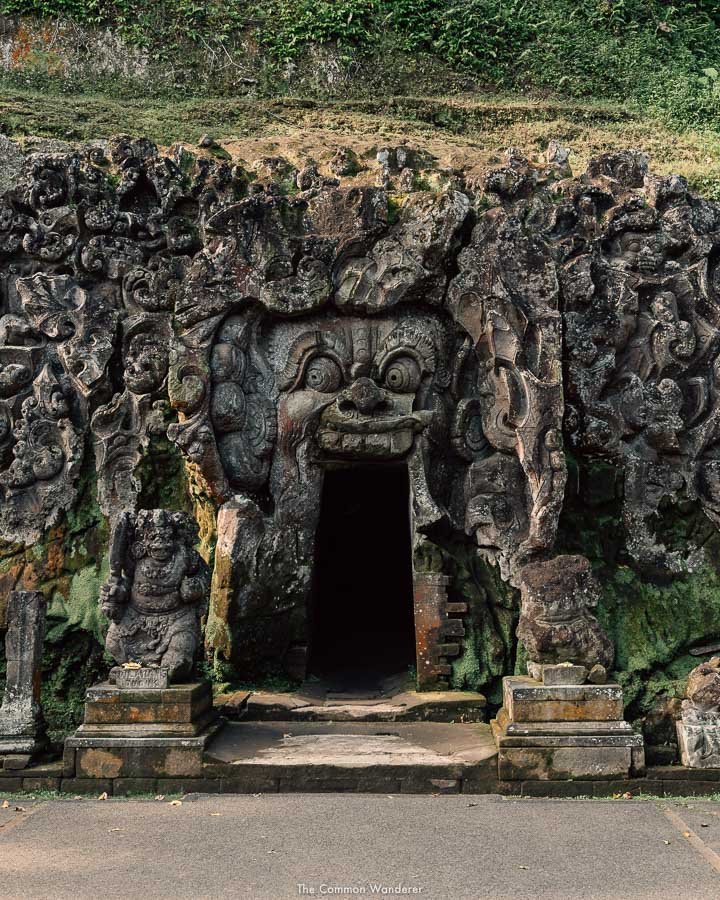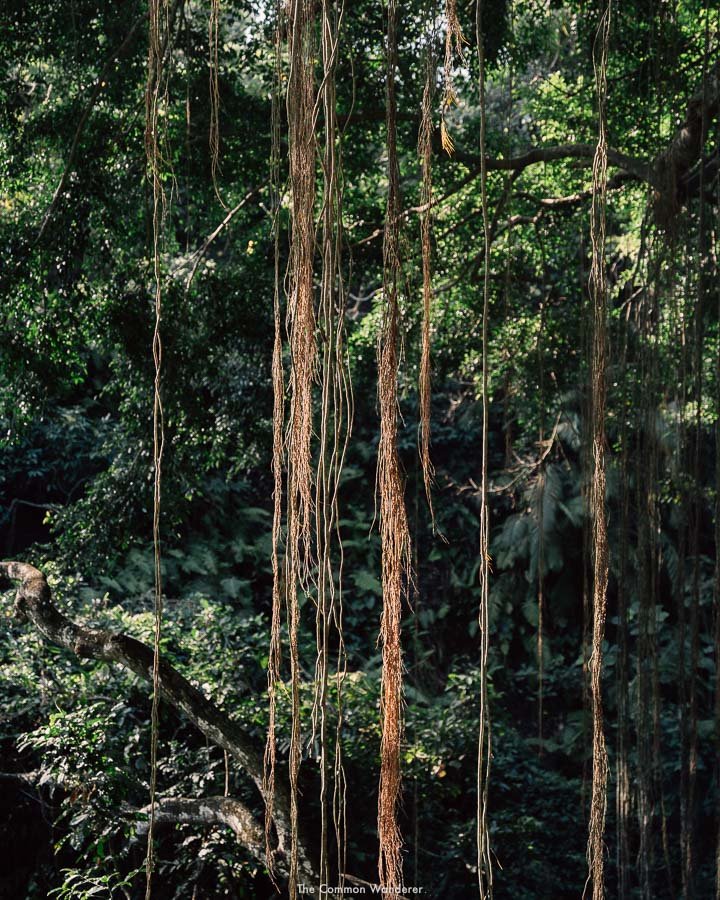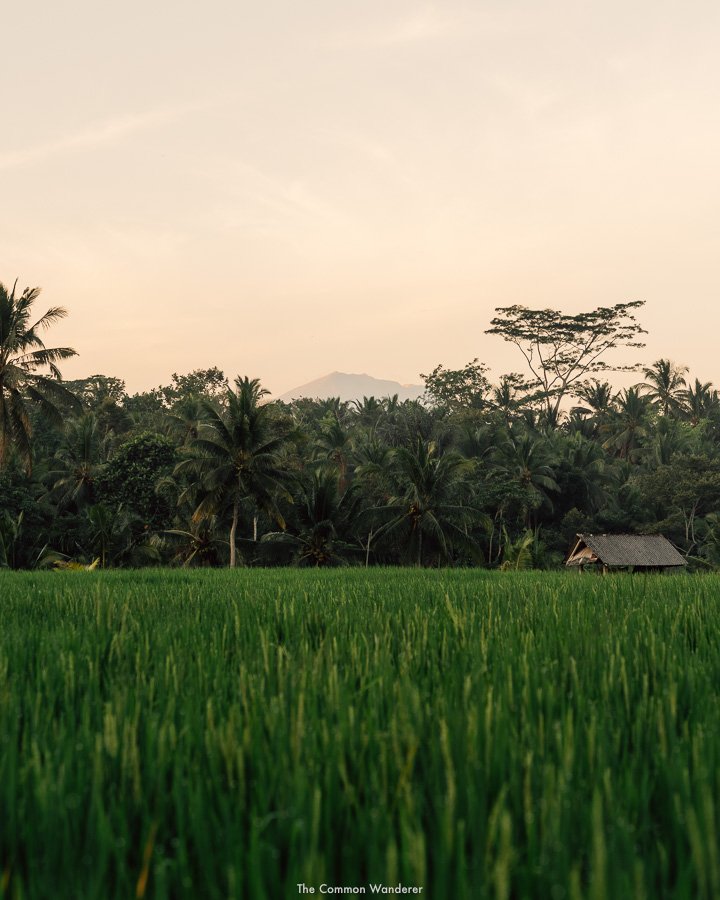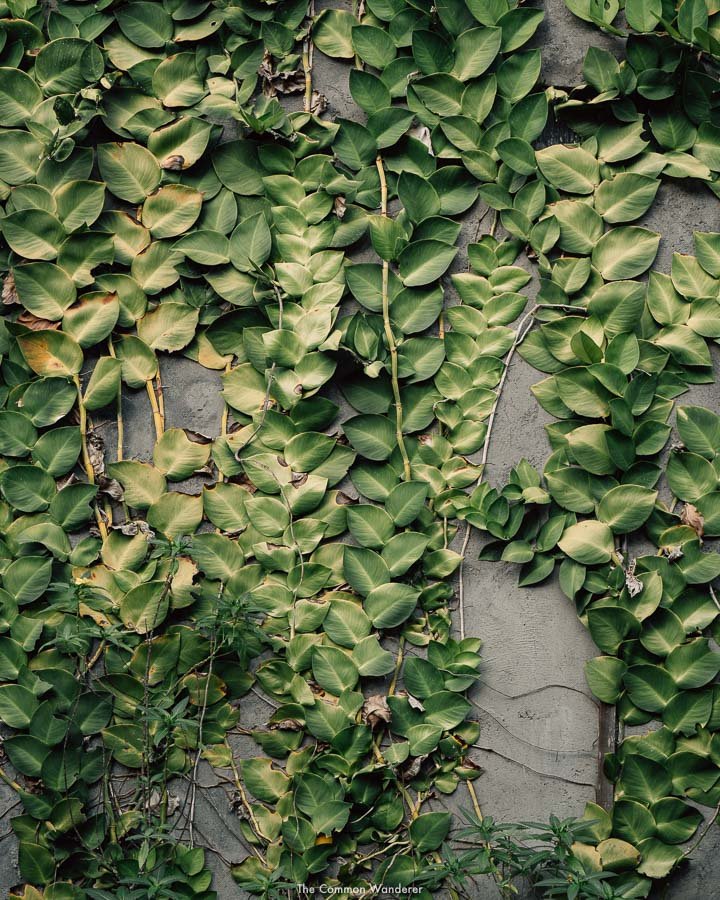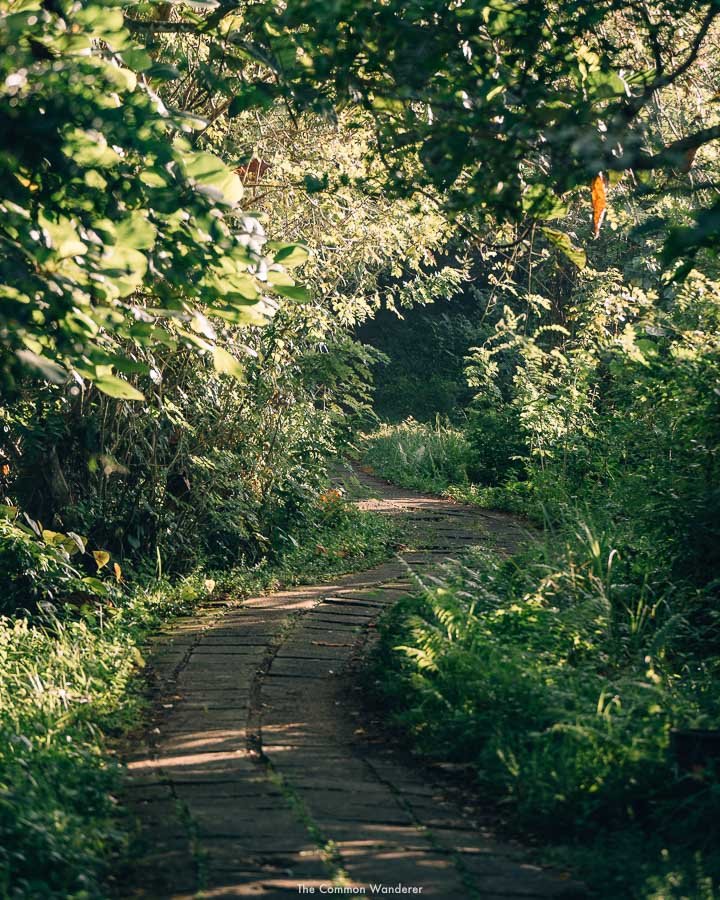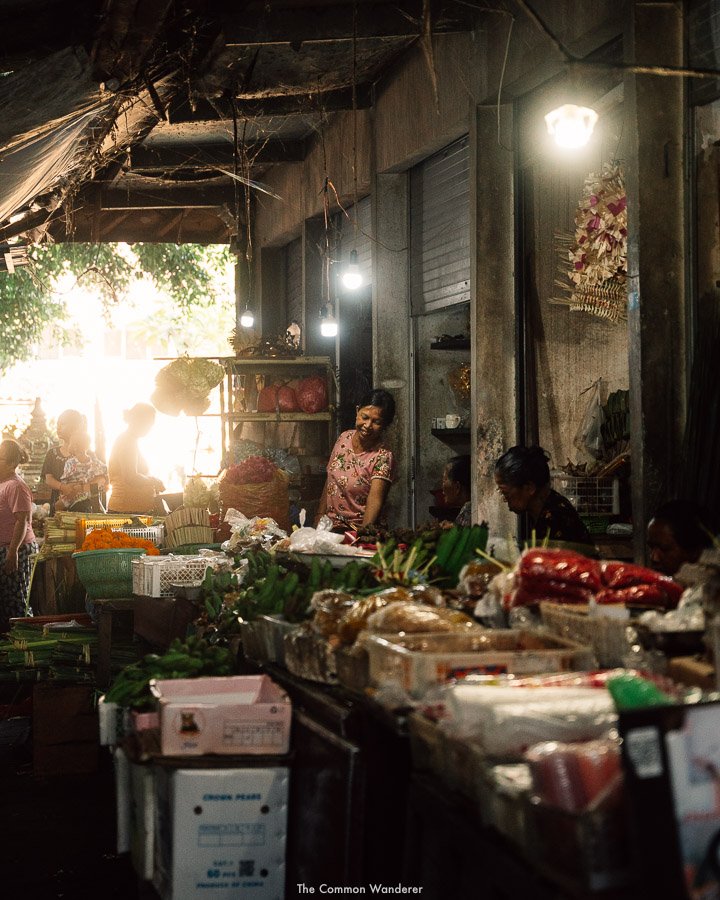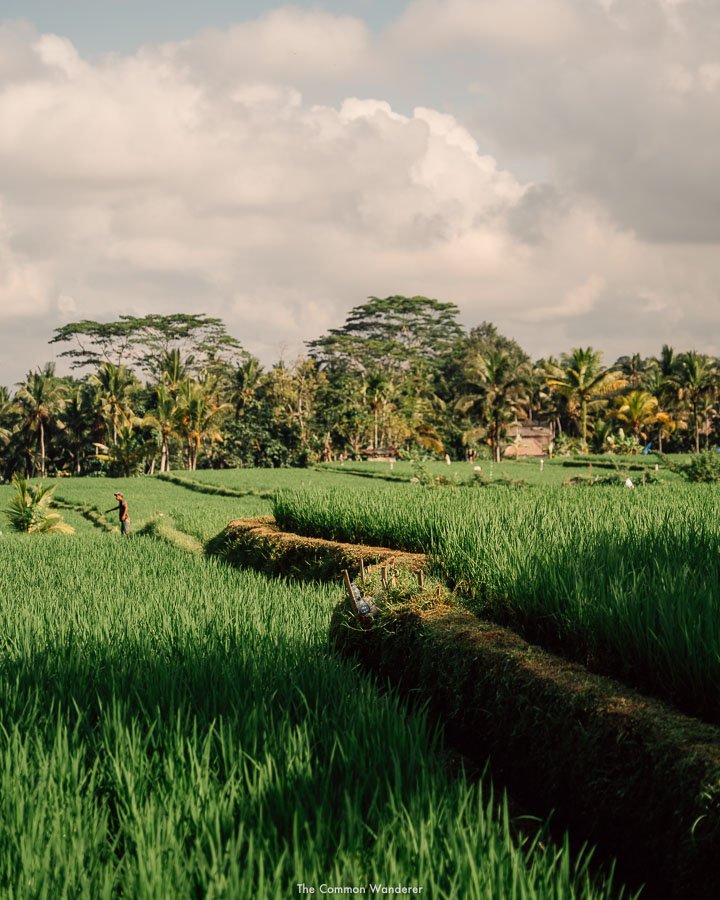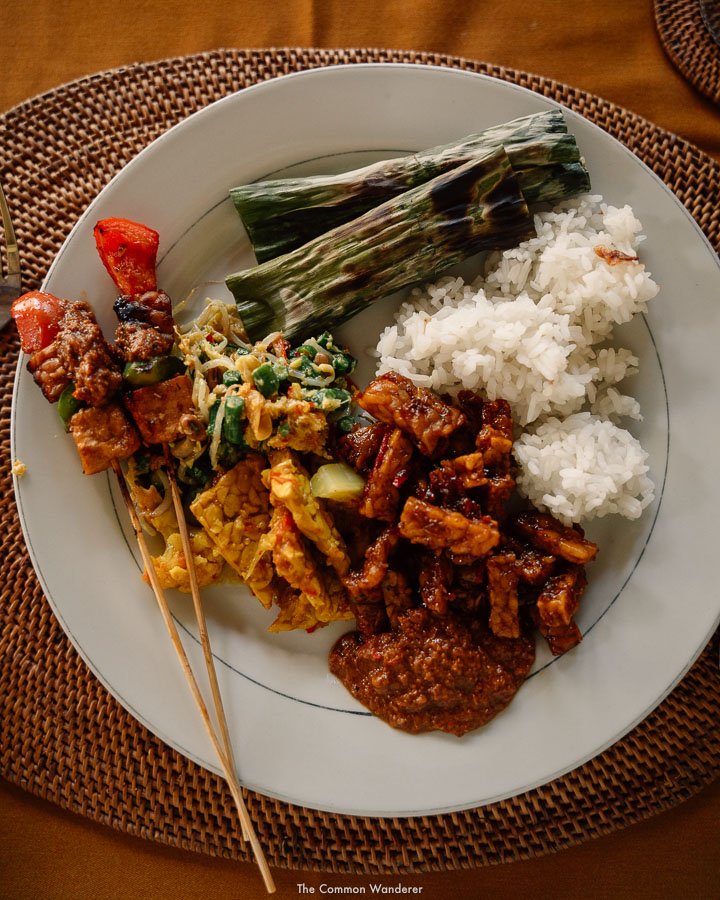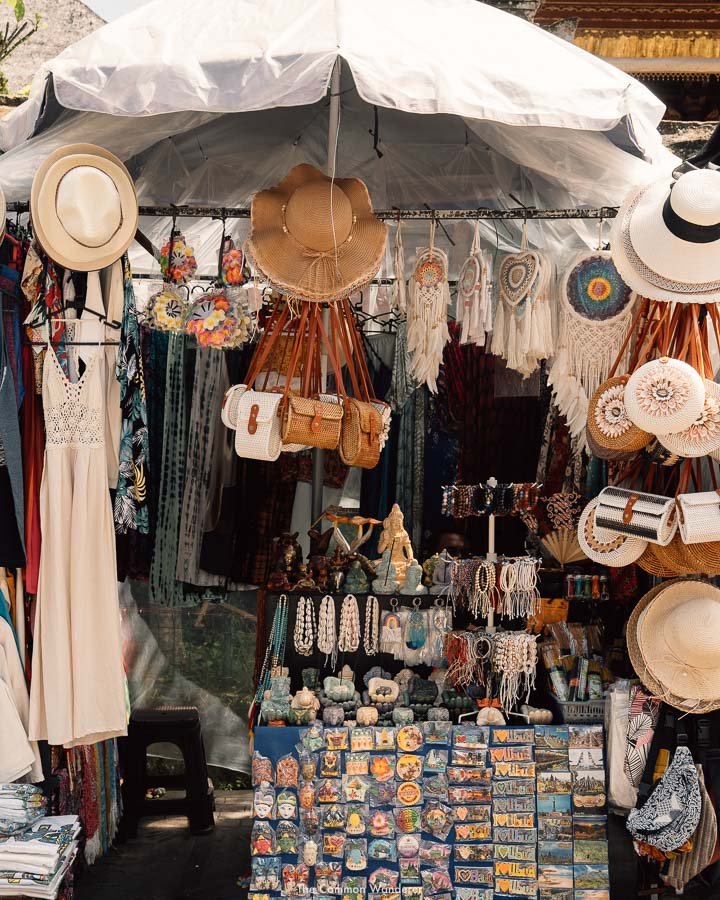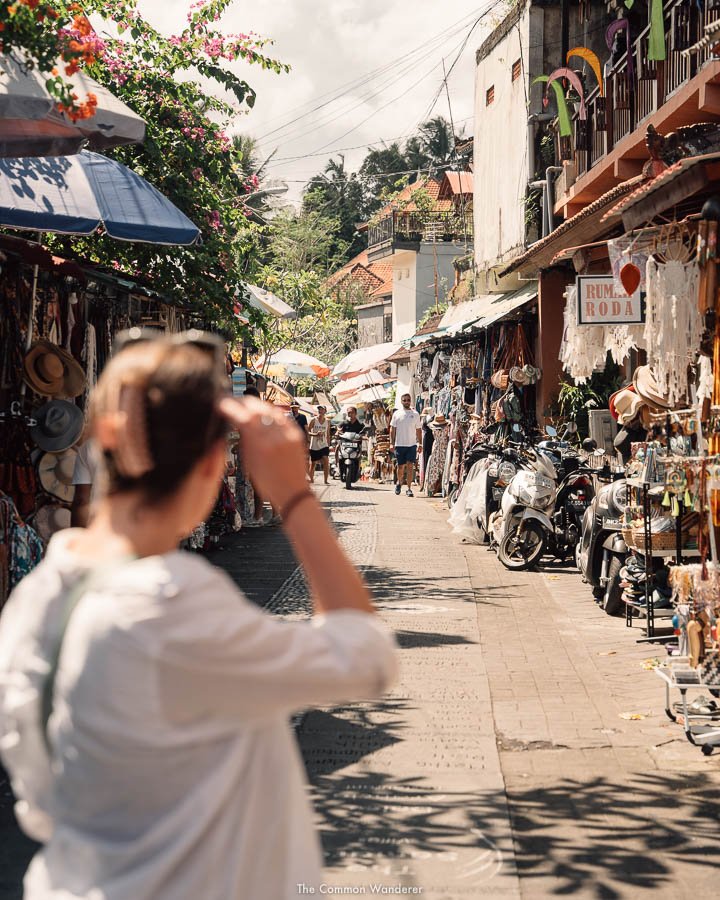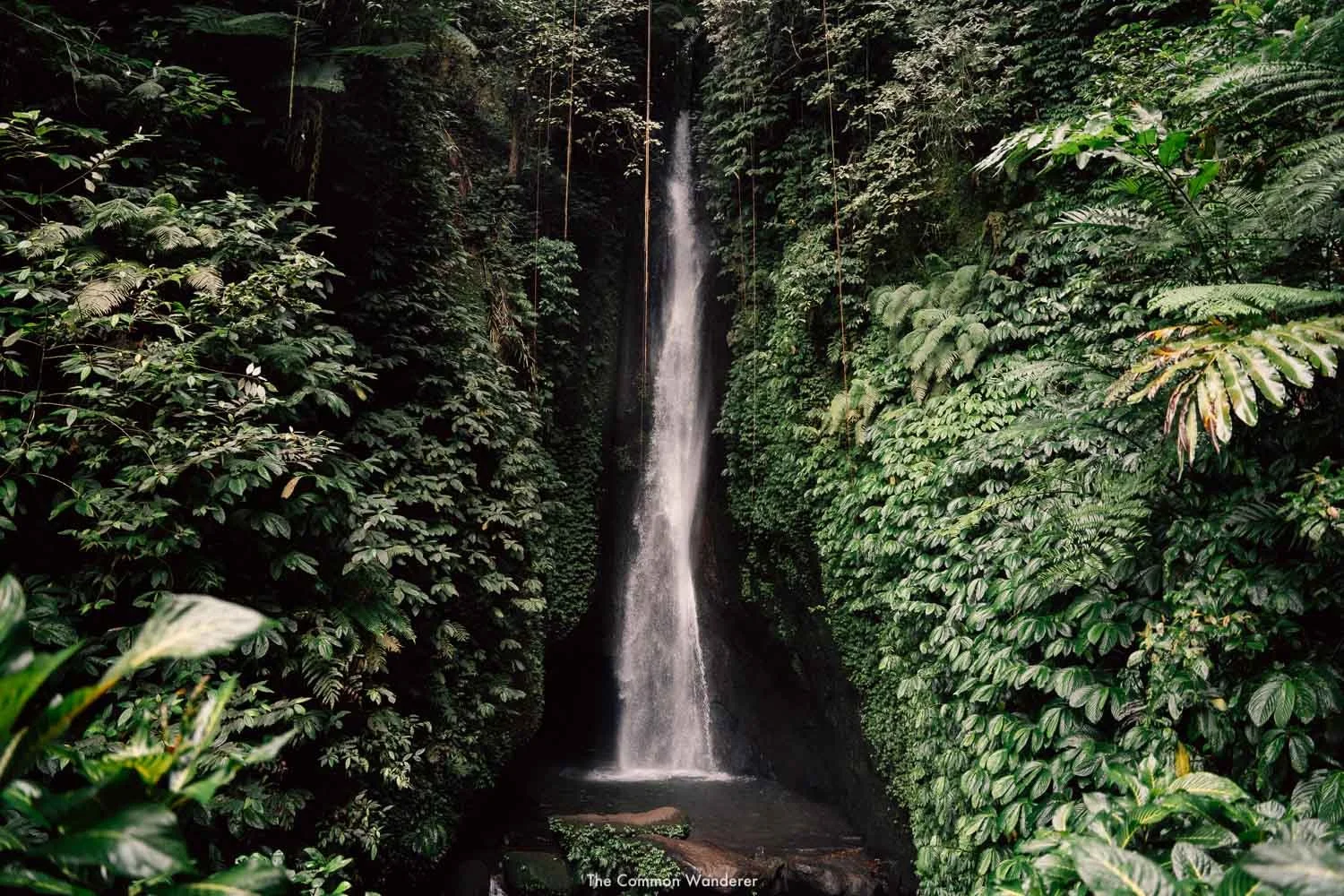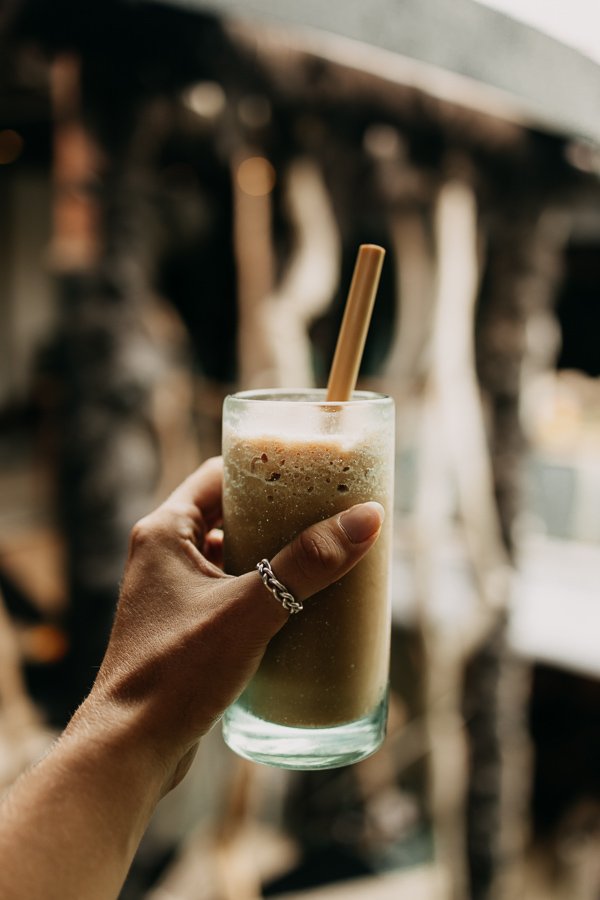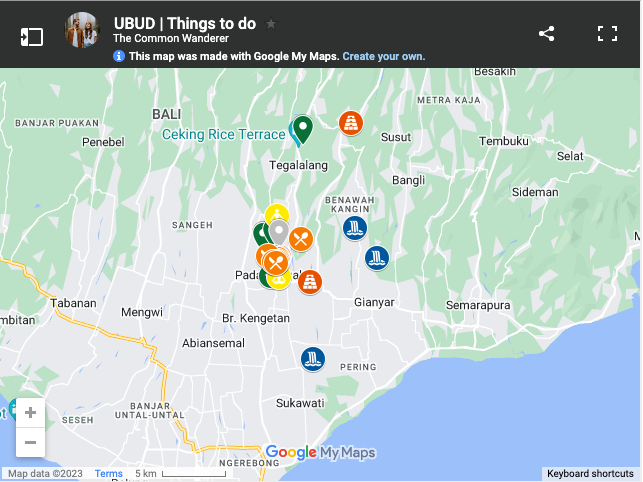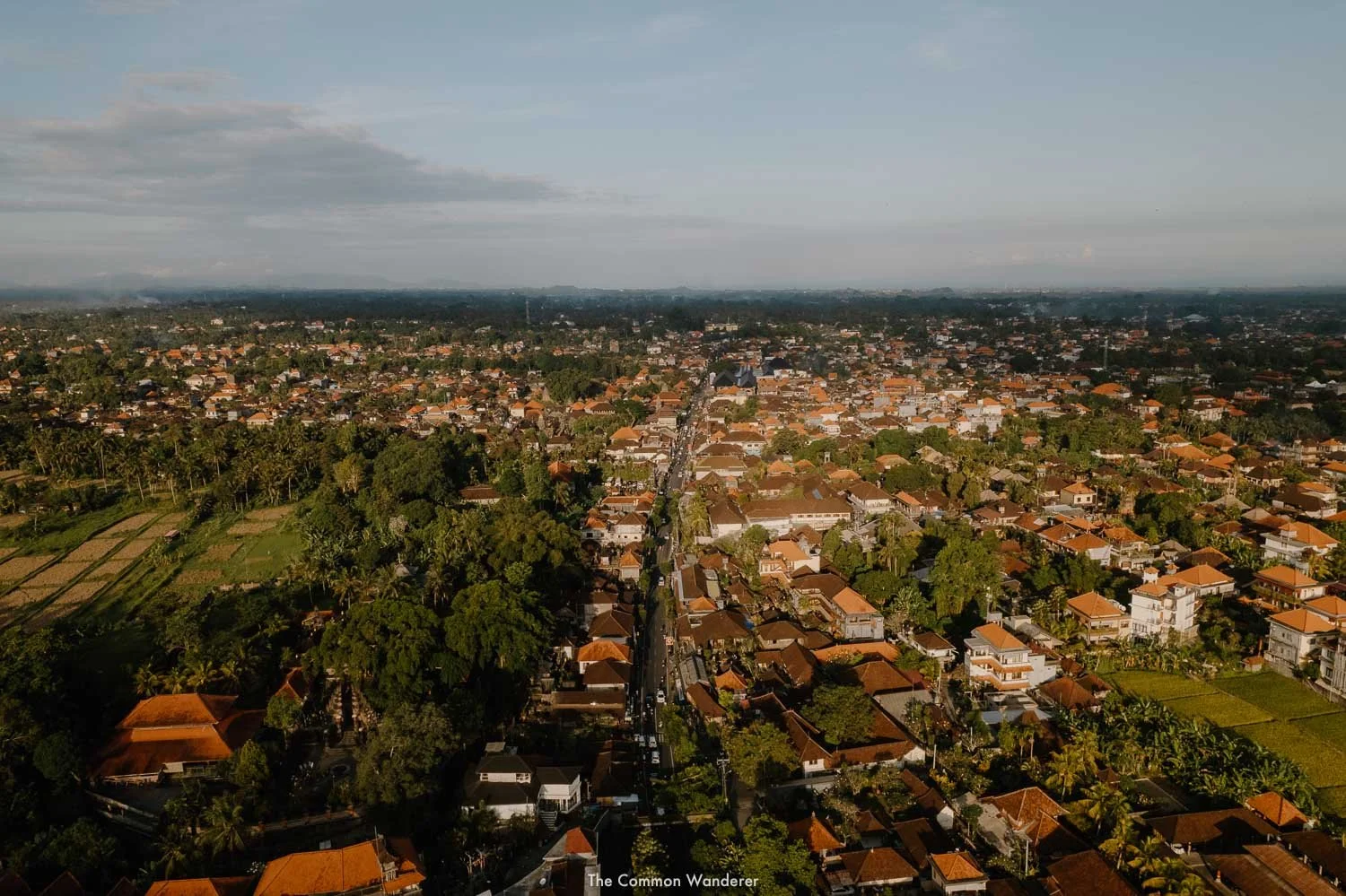10+ Wonderful Things to do in the Cultural Capital of Bali, Ubud
Discover the best things to do in Ubud, Bali, the cultural heart of the island of the Gods. From traditional dance performances to walking through rice fields and immersing yourself in sound at the Pyramids of Chi, this guide has something for everyone.
If paradise is a place on Earth, it might be here.
Welcome to Bali, the island of the Gods, and its cultural heart, Ubud.
Ubud, and Bali too for that matter, is no longer the secret it used to be. Thanks to the phenomenon that was “Eat Pray Love,” influencers, and social media in general, Bali is now an incredibly popular destination. In spite of all this, has the magic endured? We have to say, yes. Emphatically yes.
Amongst rice terraces, towering waterfalls, dense rainforest, and ancient temples, the streets of Ubud bustle. Here, grey monkeys scamper in the trees and countless stray dogs lounge on the sidewalks. Smiling locals offer their shiny wares to those passing by and someone offers you a taxi every hundred metres. Restaurants, designed to be places of extreme beauty, sit next to humble warungs serving delicious local food.
As Ubud has grown, it has expanded its offerings. What used to be a prominent spiritual centre with barefoot yogis drifting through the streets in search of raw food has become a city with something for everyone.
(To the yogis, don’t worry. There are still yoga studios and cafes serving raw food.)
Here, you can meditate under a vivid sunset next to a rice field or ride an ATV through a muddy jungle trek. You can dine at restaurants that enchant the eyes and please the stomach. There are meandering paths to be followed and roads that can usher you from the hullabaloo of town into peaceful farming communities.
In Ubud, we encourage you to dive deep. The more you look, the more you see. The greater your curiosity, the more you will discover.
Love our photos? They were all edited using our Sri Lanka Preset Pack, which you can purchase here!
UBUD SNAPSHOT
WHERE | Ubud, Bali
THINGS TO DO | Temple hop, Ubud market, watch a traditional dance, Sacred Monkey Forest, Tegalalang Rice Terraces, sunrise walk at Campuhan Ridge
HOW TO GET THERE | Taxi/private transfer, Go Jek/Grab, Scooter, tour
HOW TO GET AROUND | Scooter, community co-op taxi’s, Go Jek/Grab
BEST TOURS | Ubud cooking class, Ubud sightseeing private tour
TOP THINGS TO DO IN UBUD, BALI
VISIT ONE OF UBUD’S INCREDIBLE TEMPLES
Lastly, a trip to Ubud would not be complete without visiting at least one of the many Hindu temples in the area.
To visit a temple, you typically need to pay an entrance fee and be dressed appropriately. Shorts are not allowed, for men or women. However, the entrance fee for most temples includes a sarong rental.
A few temples within central Ubud are open to visitors- namely the Pura Dalem Temple (map) and Saraswati Temple (map). Saraswati (also known as the Ubud Water Palace) is tucked behind Cafe Lotus and free to visit. Pura Dalem costs 10,000 IDR to enter.
Outside of Ubud, there are many more temples to discover:
Pura Tirta Empul | Pura Tirta Empul is an enchanting water temple located about 15km from Ubud centre. The temple holds a captivating history; Built in the 10th century, it served as a place of purification and worship. Its natural springs were believed to possess healing powers, attracting pilgrims and devotees seeking spiritual cleansing and renewal for centuries. Now, it’s one of the most popular in Bali, as visitors, and locals, may douse themselves in the holy water. Book your guided tour here
Goa Gajah Temple | The Elephant Cave temple is located 6km outside of Ubud. It’s also one of our favourite places to visit. The famous Elephant Cave is carved into the hill and you enter through the mouth of a wide-eyed face. This site is also home to both a Hindu and Buddhist temple. The Buddhist temple is in the jungle, outside of the Hindu temple compound, and you do not want to miss it! There are only a few signs pointing the way, but it’s incredible once you find it.
THE DETAILS
Entrance Fee | Free - 50,000 IDR
BOOK | This incredible Pura Tirta Empul guided tour
WATCH A TRADITIONAL DANCE
If you could only do one thing on this list, then we would urge you to attend a traditional dance. Witnessing the Kecak fire dance was the most moving and impactful part of our trip.
The performance tells the Hindu story of Ramayana through Balinese dance. No music plays from start to finish. Instead, the atmosphere is created by 100 chanting men sitting bare-chested and cross-legged in a circle, swaying as their voices swell and slow in harmony. For nearly an hour, they repeat the same sounds over and over (cak-cak-cak), quickening and softening with the epic tale.
After the Kecak fire dance comes the Sanghyang Dedari. Two young girls (virgins who have not yet reached puberty) arrive perched on the shoulders of tall men and are placed in the centre of the stage. Their eyes remain shut but they dance in unison, believed to be possessed by a spirit. The dance, called the Legong, involves intricate movements of the fingers and feet, as well as dramatic facial expressions.
The last act is the Sanghyang Jaran dance. A bonfire is lit from coconut husks, centre stage, and a man riding a “horse” dances over them, kicking and twirling.
THE DETAILS
Where | Pura Dalem Taman Kaja Temple (Wednesday and Saturday) & Arma Museum (Saturday)
Times | 7:30 pm
Cost | 100,000 IDR
BOOK | Skip the line and book in advance this Kecak Dance show at Ubud Palace
BRAVE THE SACRED MONKEY FOREST
The Monkey Forest may be the most popular place to visit in Ubud. Located right in the centre of town, the Monkey Forest is a pleasant rainforest walk that hosts, you guessed it, monkeys.
Now, we have to tell you, you do not need to go to the Monkey Forest to see monkeys. Monkeys are everywhere in Ubud. They’re at your hotel. They’re on the street trying to steal fruit from the fruit lady. They’re outside the entrance to the Monkey Forest causing trouble because monkeys are, in fact, trouble.
If you’re from a country without monkeys, seeing your first is exciting. But our furry little cousins aren’t just cute, they’re also mischievous, devilish, and sometimes aggressive.
Many of us who have travelled in Southeast Asia have monkey war stories. And for many tourists, the location of their nightmare monkey encounter is the Monkey Forest in Ubud. It is not at all uncommon to hear a fellow traveller recount that one time they were bitten by a monkey at the Monkey Forest.
So, if you choose to brave this stroll through the jungle, go forth with caution. Give the monkeys a wide berth and do not, under any circumstances, look them in the eye. Remove all jewellery and your glasses too, if you can manage. These monkeys are thieves.
Alternatively, take a guided tour to be kept safe!
THE DETAILS
Where | Jl. Monkey Forest, Ubud
Times | 9 am - 5 pm
Cost | 80,000 IDR
BOOK | Learn all about the Monkey Temple (and be kept safe from the monkeys!) with this guided tour
VISIT THE INCREDIBLE TEGALALANG RICE TERRACES
A faint breeze stirs the grass and rice plants around you; birds and little bugs sing their morning songs. The jungle rears its emerald mane as local farmers bend over their crops, tending to the ambitious stalks. Water sits on the edges of the rice leaves, twinkling in the early daylight.
The mesmerising Tegalalang Rice Terraces are centuries old, and although, the changing times have also changed this historical gem, it’s still one of the best things to do in Ubud.
Added to UNESCO’s list of World Heritage Sites in 2012 for its cultural significance, Tegalalang Rice Terrace features a special water system called “subak.” Water from springs flows into water temples and from there, is distributed through the rice paddies - a practice that dates back to the 11th century and illustrates the Balinese philosophical principle of “Tri Hita Karana” - harmony with God, harmony among people, and harmony with the environment.
The rice terraces are the physical manifestation of this belief. Sacred waters, managed by the temples, allow the rice terraces to flourish in harmony with the surrounding environment. The harvest then feeds the people.
The Tegalalang Rice Terraces are beautiful - actually stunningly beautiful in real life. But their magic also lies in what they represent: this perfect balance between the natural world and humans.
Now, this balance has been somewhat affected by rampant development as the rice fields become overwhelmed by Instagram fame, however by arriving at sunrise, you not only get the best conditions for admiring their physical beauty, but you also escape the crowds and help lessen the impact on this significant site.
Located just a short distance from the Ubud city centre, the terraces are easily accessible by scooter or taxi, or by organised tour.
THE DETAILS
Where |Tegalalang Rice Terraces
Entrance Fees | Between 10,000 and 15,000 IDR, or free if you arrive early in the morning or late in the evening
Best time to visit | Sunrise, pre-7 am
BOOK | Book this popular tour including highlights of Ubud
WALK AMONG LOCAL RICE FIELDS
If the hustle and bustle of Tegalalang are too much, and you’re searching for your own rice field relaxation, there are two beautiful walks found within Ubud that feature stunning landscapes without the crowds; the Kajeng Rice Fields, and the Sari Organik Walk.
These walks are located just off Jl. Raya and sit parallel to one another. The Kajeng Rice Fields and the Sari Organik Walk actually connect in the jungle, so you can turn this walk into a wonderful loop. Just keep heading north! The wide paved path eventually departs the fields, narrows, and turns into a retaining wall alongside a small creek. It continues on, weaving through the thick rainforest. After some time, you arrive at a bridge over the rushing stream and begin making your way south toward town.
The Campuhan Ridge Walk is another beautiful 2km (one-way) walk that typically takes 1-2 hours to complete. You begin in the jungle but quickly burst forth onto a meandering ridgeline. It’s also a popular morning destination for runners (see below).
THE DETAILS
Where | Jl. Raya, Ubud
Cost | Free!
SPEND SUNRISE WALKING THE CAMPUHAN RIDGE WALK
One of the best things to do in Ubud is to wake early and get your body moving along the Campuhan Ridge Walk near the centre of town.
A beautiful 2km (one-way) walk that typically takes 1-2 hours to complete, the walk begins next to a temple in the jungle before quickly bursting forth onto a meandering ridgeline.
The path winds its way through lush greenery, providing stunning views of Ubud's captivating landscapes, including rice fields, volcanoes, palm trees, and deep gorges. The ever-changing morning light creates a magical ambience, painting the landscape with soft hues and shadows and is especially pretty when misty (tropical mist is just something else!).
There's no need to hurry; take your time. Once you reach the end of the path, you can grab a coconut and relax or turn around and walk back, enjoying different perspectives of the same lush scenes.
The walk is also a popular morning destination for runners, but arriving early enough will allow you to enjoy the path almost entirely to yourself.
THE DETAILS
Where | Campuhan Ridge Walk
Entrance fees | Free
Parking | If arriving by scooter, park here
TAKE A LOCAL COOKING CLASS
We’ve always been firm believers in the notion that to understand a place and its people, you need to delve into its food culture. After all, food is the great bringer-together of people; so much of our social, cultural, and national identities stem from sharing food with our communities.
It’s why we try to take a local cooking class in every destination we visit — and in a place like Bali, where it’s so easy to get swept up in the excitement of trendy western-style vegan cafes and restaurants it feels even more important.
To get our own taste of Balinese cuisine, we jumped on a local cooking in the village of Laplapan on the outskirts of Ubud. The class begins with a tour of the local market, a refreshing insight into local produce and life that couldn’t be more different to the bustling tourist-trap markets found in Ubud central. Then, it’s a stop past a nearby rice paddy to learn how rice is cultivated through Subak, an ancient sustainable irrigation and water temple network that is as important spiritually and culturally to the Balinese as it is agriculturally.
Finally, you’ll head to the traditional kitchen surrounded by jungle. After learning how to make coconut oil and a canang sari (daily offering) using traditional methods, it’s on to the 8-course cooking adventure best described as an odyssey, packed full of flavour, fun, and laughter.
Finally, once the stoves had been switched off, the pans ceased sizzling, and the aromas were almost becoming too much for our bellies, you all sit down together to feast upon the fruits of your labour… and oh boy, is that food worth the mouthwatering wait!
Vegetarians, vegans, omnivores, pescatarians, and everyone in between are catered for — and it’s not a stretch to say that a cooking class was one of our favourite things to do in Bali. Highly recommended for those with an interest in delving into local culture and cuisine!
THE DETAILS
Who | Ubud Cooking Class
Where | Laplapan village
Times | 8:30 am - 1:30 pm, 3 pm - 7 pm ( no market tour)
Cost | ~44 USD per person
BOOK | This highly-rated and wonderful Ubud Cooking Class
PRACTICE YOGA
Although tourists from every walk of life now walk Ubud’s streets, it was the yogis who travelled here first. Ubud is regarded as one of Southeast Asia’s most vibrant yoga hubs with multiple studios populated with passionate yogis.
The Yoga Barn is the most well-known studio in Ubud, as well as the biggest. It’s really a small village with bamboo structures housing yoga studios, a cafe, accommodation, workshops, and a spa. Even if yoga isn’t your thing, The Yoga Barn still warrants a visit. The cafe is tasty and who doesn’t love a massage?!
However, there is one problem.
The yoga classes at Yoga Barn are huge. You’re practising in what is essentially a massive treehouse (which is great) but there are often 100 other people in there with you (which is less great). Understandably, this isn’t everyone’s cup of tea.
We heard that it wasn’t as crowded prior to Covid, so hopefully, smaller class sizes will return soon.
Fortunately, Yoga Barn isn’t your only option. Radiantly Alive is a beloved and highly-rated studio in central Ubud. There’s also Intuitive Flow, Ubud Yoga House (located in the rice fields), and many, many more.
THE DETAILS
Who | Radiantly Alive
Where | Jl. Jembawan No. 3, Ubud
Times | 7am - 7pm
Cost | 140,000 IDR for drop-in
BOOK | This full-day wellness retreat includes yoga
TAKE A SILVER JEWELLERY-MAKING CLASS
While wandering Ubud’s streets, you will find no shortage of shops selling exquisite pieces of silver jewellery. Bali actually has a long history of silversmithing. Jewellery is considered a gift to the Gods- and so the Balinese take great care to craft incredible pieces with outstanding workmanship.
And you can participate in this ancient tradition by taking one of the jewellery-making classes offered by various silversmiths in Bali’s cultural centre.
We were eager and clumsy students in Chez Monique Silversmith Classes. In spite of our enthusiasm, we had to restart our simple designs many, many times after many, many mistakes.
Fortunately, the silversmiths were the definition of patience and guided us through every step. It took more than two hours to make our rings, although we did take longer than everyone else there.
The whole experience was fantastic and it’s one of our top things to do in Ubud.
If jewellery making isn’t your thing, why not try this 3-hour wood-carving masterclass?
THE DETAILS
Cost | ~ 600,000 IDR
BOOK | This popular 3-hour silver jewellery-making class
SHOP AT UBUD’S BUSTLING MARKETS
Arts and crafts are in abundance in Ubud, which has helped establish the city as the cultural heart of Bali. A visit to the local markets allows you to get up close and personal with this side of Balinese culture.
Well, sort of. The markets contain the type of souvenirs and items that you would associate with a trip to Bali. Small Buddha and elephant statues, Hindu figurines, paintings of vibrant orange sunsets over fields of golden rice, and clothes with colourful patterns and bobbles. However, many stalls sell the same things as their neighbour two shops down.
Walking through the markets, you begin to get an odd sense of déjà vu.
That being said, if you like to shop and you want a souvenir, this is the place. Ubud has several markets, the main ones being the Ubud Market and the Ubud Art Market.
Prepare to haggle for a good deal but rest assured, if the bargain falls through, you can usually find the object of your design at the next shop.
THE DETAILS
Where | Jl. Raya Ubud No. 35, Ubud
Cost | Free!
IMMERSE YOURSELF IN SOUND AT THE PYRAMIDS OF CHI
Ubud’s spiritual heart still beats. If you have arrived in this humble Balinese town hoping to expand your consciousness or peel back the layers of your own identity, then you have come to the right place. There are teachers, classes, and spaces to facilitate wherever you are on your journey.
The Pyramids of Chi emerge from the jungle a few kilometres outside central Ubud. Although their offerings are vast, they are most known for sound healing in a stunning, magical location. In fact, the Pyramids of Chi are the largest sound healing venue in the world.
In 2017, the Pyramids of Chi opened their doors to spiritual seekers and the spiritually curious. They have since hosted countless classes, ceremonies, and courses. You have to check their website to see everything they do (there’s a lot!) but here’s a brief taste: cacao ceremonies, moon ceremonies, breathwork, massages, Qi Gong, and reincarnation therapy.
They also have a cafe on the grounds, serving up healthy, homemade, plant-based food.
THE DETAILS
Where | Jl. Kelebang Moding No. 22, Ubud
Opening Hours | 10am - 8pm
BASK IN A BEAUTIFUL WATERFALL
Ubud is surrounded by lush jungle waterfalls that belong in an episode of Planet Earth. These roaring pillars of water are framed by a lush and overspilling jungle. In these special spots, the river breaks free from the foliage and continues its rush to the ocean.
Waterfalls are not in short supply here, although some are more popular than others. Crowds should be expected at many of the island’s tallest and biggest such as Tegenungan, Tukad Cepung, Kanto Lampo, and Tibumana.
We also suggest visiting Sumampan waterfall. It’s stunning yet tends to be less crowded. After a steep staircase carved out of the side of the cliff, you arrive at the river flowing from the base of the waterfall. The waterfall itself appears beneath a shroud of vines. But our favourite part? The expressive carvings etched into nearly every rock in sight.
Most waterfalls require a small entrance fee of 5,000 - 15,000 IDR. Make sure you bring cash!
THE DETAILS
Entrance Fee | 5,000 - 15,000 IDR
Read more | Our guide on Tibumana waterfall here.
BOOK | Explore Ubud’s best waterfalls with this tour
WHERE TO EAT AND DRINK IN UBUD
LAZY CATS
Stepping into Lazy Cats is like stepping back in time- the past colliding with the present to create an atmosphere of humble decadence. You half expect the guests to be adventurers of old, scribbling in faded brown notebooks as they sip coffee from chipped cups. The distressed concrete walls stretch high above before giving way to a peaked roof with murky windows. Lightbulbs hang on long strings. The assorted furniture is opulent, made up of plush chairs and sofas in brilliant pastels.
The vintage space is gorgeous. It’s a true joy to sit here and we did- a lot! Lazy Cats opens in the morning and doesn’t shut its doors until evening, making it a favourite spot for brunch, coffee, dinner, and drinks. The fare is all vegetarian and costs the same as other Western establishments in Ubud (55K - 80K IDR per dish).
We suggest the omelette and oat latte in the morning, and the tempeh burger with the Blue Seduction cocktail in the evening!
THE DETAILS
Where | Jl. Raya Ubud No.11, Ubud
Opening Hours | 8am - 9pm Sunday - Thursday. 8am - 10pm Friday - Saturday.
CLEAR CAFE
We always recommend a visit to Clear Cafe in Ubud. It’s just… gorgeous. If heaven has a restaurant, it must look something like this. To come to Clear Cafe is to be transported through a portal into a better, more perfect world.
Clear was a beloved favourite during my first trips to Ubud in 2013 and 2014. It actually burned down in 2014 (I was devastated) but they rebuilt, and what they built exceeded all hope and expectation. You enter through an elaborately carved, circular door into a large building with koi ponds and a spiral staircase. Orange marigolds guide your path to the upstairs seating area.
And don’t forget to take the fireman’s pole on the way down!
Clear Cafe offers vegan, vegetarian, pescatarian, and raw food options. They also have a beautiful selection of iced drinks and infused waters.
THE DETAILS
Where | Jl. Hanoman No.8, Ubud
Opening Hours | 8am - 11pm *kitchen closes at 10pm
MELTING WOK WARUNG
The Melting Wok Warung is located on the delightful street, Jl. Gootama. This cobblestoned, car-free lane is lined with shops, restaurants, and warungs for you to explore and enjoy.
Vegans, vegetarians, and omnivores are all welcome in this charming warung. You will not be handed menus upon sitting down. Instead, the cheerful staff rush over carrying a large chalkboard detailing the menu in chalk writing. The vegan selections, however, are posted on another chalkboard on the far wall.
The food is fantastic, the staff are friendly and smiling, and the location is perfect. What’s not to love?
One tip: the Melting Wok does not accept credit cards- only cash.
THE DETAILS
Where | Jl. Gootama No.13, Ubud
Opening Hours | 10am - 10pm
TITIK TEMU COFFEE
If you appreciate an excellent cup of coffee- or need a caffeine kick to make it through the morning- you have to go to Titik Temu by the Ubud Palace. They make the best hot oat latte in all of Ubud.
The space itself is very aesthetic. It has a simple, minimalist design with clean edges but beautiful details. There’s also an open and airy upstairs with floor seating. (We actually never realised there was another floor despite visiting many times. Oops!)
Temu is Indonesian-owned. They also roast their own beans and have several locations across Bali and Java. Although they do serve food, we only ever went for the coffee!
THE DETAILS
Where | Jl. Suweta No.6, Ubud
Opening Hours | 8am - 10pm
MAP OF THE BEST THINGS TO DO IN UBUD
We’ve created a detailed map of the best places to visit in Ubud, as well as where to eat, which you can download for your visit.
To save our map, click the star to the right of the map title, which will download the map to: your places - maps in your Google account.
Easy!
UBUD TRAVEL INFORMATION
WHERE IS UBUD, BALI
Ubud lies in the heart of Bali, an Indonesian island in the Indian Ocean neighbouring the islands of Java and Lombok (see Map). It’s roughly an hour north of Bali’s only international airport, Ngurah Rai.
There are no beaches here– you have to go to Canggu or Uluwatu for those! Instead, Ubud is nestled in the central foothills of the Gianyar regency and surrounded by rice terraces.
WHEN IS THE BEST TIME TO VISIT UBUD?
Bali has two seasons: the wet season and the dry season. The wet season, when the tropical monsoons soak the island in heavy rainfall, begins in November and ends in March. January tends to be the wettest month. The dry season goes from April until October.
That being said, the weather begins to shift in October and it can get very wet very quickly.
In Ubud, the temperature is consistent year-round with daily highs of 28-30 degrees Celsius and lows of 23-24. July and August are the coolest months- but only slightly! Similarly, humidity levels stay about the same, falling between 80-90%.
If you choose to go to Ubud during the dry season, you will find very little variation between months. However, we still recommend visiting between June and September when it’s driest. August is our favourite month since it’s slightly cooler and hardly rains… but it’s also one of the busiest times in Ubud because of the good weather.
HOW LONG SHOULD YOU SPEND IN UBUD?
We recommend spending a week in Ubud. That will give you enough time to try the best restaurants and see the major nearby attractions.
Ubud serves as a good jumping-off point for the rest of Bali. After all, almost everywhere that you may want to go is only a day trip away. If you choose to use Ubud as your base, you’ll find it easy to see most of the major destinations that the island has to offer.
GETTING THERE AND AROUND
HOW TO GET TO UBUD
If you’re fresh off the plane and Ubud is your first destination, your best option is to hire a car. You can take a taxi from the Denpasar airport or order a ride through the Gojek or Grab apps. Bluebird is the island’s largest taxi service and offers fair rates.
Gojek and Grab are usually cheaper but you need to download the apps and set up your account.
Your hotel may offer private transfers from Ngurah Rai International Airport to Ubud. For a fixed price, there will be a driver waiting for you upon arrival to whisk you off to your accommodation.
Getting from the airport to Ubud via taxi or car hire should cost around 300,000 IDR. The private car transfer supplied by our hotel did cost slightly more at 350,000 IDR.
…
When you first walk through the airport doors into the thick, humid Balinese air, you will be greeted by a chorus of young men shouting “taxi, taxi!” They ask high prices for their services, often two or three times the cost of a Gojek or private airport transfer. If you want to use this option, you must negotiate - firmly.
You can also hire a motorbike (Gojek) to take you to Ubud. This is the cheapest option for solo travellers but, of course, it won’t work if you have tons of luggage. Ojek drivers can be found outside the Domestic Terminal.
But what if you’re currently in Bali? Well, if you’re renting your own scooter, you can simply scoot yourself to Ubud! No scooter? Take a taxi or a Gojek/Grab.
There are some shuttle buses that move tourists around the island, however, most of these companies lack websites and cannot be found on search engines. Keep your eyes peeled as you explore wherever you are for shuttle bus schedules.
Kura-Kura is one shuttle bus service that does have a website and offers transport from Kuta to Ubud for 100,000 IDR.
HOW TO GET AROUND UBUD
Ubud is still a small city and the entire downtown is walkable. You can get almost anywhere within 30 minutes, usually 15. Most streets in Ubud have sidewalks (unlike the nearby city of Canggu) although, between street vendors and tourists, many sidewalks are nearing their load capacity.
// SCOOTER
If you’re not walking around Ubud, you’re probably scooting. Scooters (or motorbikes) remain the default mode of transportation in Bali, even as more and more cars take to the narrow roads.
There are plenty of scooter rental options in Ubud. We suggest shopping around, asking fellow travellers for recommendations, and messaging rental shops on Whatsapp to find the best price.
Prices vary from business to business and scooter to scooter. That being said, you should expect to spend between 80,000 - 100,000 IDR per day in Ubud. If you’re renting for 1-2 weeks, the daily rate can fall to 65,000 IDR. Your scooter rental will include a helmet- which you should wear.
// GOJEK OR GRAB
Gojek and Grab both offer scooter taxi services. This is the best option if you don’t feel up to braving Ubud’s often congested streets on a scooter of your own. The cost is cheap and the apps are simple to use. Rides within Ubud should cost no more than 25,000 IDR- far less during off-peak hours.
You can also hire a car through the Gojek and Grab apps. However, we don’t think this is necessary if you’re within city limits. Cars are not an efficient way of manoeuvring through Ubud’s narrow roads. Hiring a car only makes sense when you want to get out of Ubud or if your accommodation is located far out of town.
// TAXI
If you want to leave Ubud city centre for sightseeing or to depart to another city, you can also choose to take a traditional taxi. Gojek and Grab are cheaper though and require no haggling.
Finding a taxi is easy. Scores of taxi drivers wait on the main streets and call “taxi!” to every tourist that passes. Just be prepared to negotiate!
RESPONSIBLE TRAVEL IN UBUD
Responsible, sustainable travel is what we’re all about here at TCW HQ, and this is especially true when we travel to places suffering from climate change and plastic pollution, such as Uluwatu.
TRAVEL DURING SHOULDER SEASON | Shoulder season is the time before and after the peak season when things are quieter, cheaper, and more enjoyable. Travel then to reduce over-tourism, and extend the season for local operators
DON’T BUY BOTTLED DRINKS | Please, for the love of the ocean: DO NOT BUY SINGLE-USE PLASTIC BOTTLES! You'll understand why when you see a bunch of plastic bottles bob past you in the open sea. Buy one of these fantastic bottles instead
USE LESS WATER | To help reduce the pressure on water supplies, keep your water usage to a minimum. We know that’s hard to do on holidays, but quick showers, and turning the tap off when brushing your teeth, cleaning etc. really help
OCEAN-FRIENDLY TOILETRIES | Everything that goes down the boat drain ends up in the ocean, try and make sure all your toiletries, sunscreen, shampoo is as ocean-friendly as possible! Solid bars are a great place to start (see below to buy some eco-friendly toiletries).
DO YOUR OWN CLEANUPS | See rubbish on the beach, forest or town? Pick it up, and dispose of it properly. If every traveller helped out during their holiday, the beaches, oceans and forests would be a much happier place for it
DON’T USE PLASTIC BAGS | Pack a reusable tote and use these to carry your snacks, drinks, or new souvenirs instead
LEAVE NO TRACE | Limit your consumption of plastic, and opt for sustainable / zero-waste alternatives instead. Pack a reusable water bottle, bring your reusable coffee cup, and if you can’t sip your cocktails without a straw, bring a metal or bamboo one along instead. And never leave a trace...
BE ANIMAL-FRIENDLY | Observe sea creatures from a distance, don’t pick up wildlife like starfish or urchins, or grab onto turtles, dolphins, etc. If an animal wants to interact with you, it’ll approach you 🙂
SUPPORT THE LOCAL COMMUNITY | Visit a locally owned warung for a meal, buy which means both supporting the local economy and community and also giving you a real authentic experience.
DRESS (AND BEHAVE) APPROPRIATELY AT TEMPLES | You are a guest in Bali. It is an absolute must to show respect towards the locals and their culture. This includes dressing and behaving appropriately at temples. This means knees and shoulders are covered (including you, men).
DO NOT RIDE ANY ELEPHANTS | Unfortunately, elephant riding is a common activity throughout Southeast Asia. It is horribly unethical and abusive. Under no circumstances should you support this appalling industry.
BALI PACKING ESSENTIALS
Travelling through Bali comes with a unique set of needs.
To help you have a comfortable, happy journey, we recommend bringing the following items with you:
REUSABLE WATER BOTTLE | THE BEST INVESTMENT WE’VE EVER MADE! We use the Grayl water purification bottles, which allow us to fill up from any water source, anywhere in the world (including train taps!)
A TOTE BAG | The humble tote is a versatile little lifesaver when on the road. They're plastic-free, small, easily foldable, and can pack a surprising amount! Check out this range of beautifully designed, personalisable totes bags here
BIODEGRADABLE WET WIPES | Keep clean without destroying the planet!
HAND SANITISER | This is not something we’d actually recommend normally, but we now live in Covid times... so this can be a bloody great investment
INTERNATIONAL TRAVEL ADAPTER | You’ll need a European plug to keep your gear going!
POWER BANK | Don’t get caught out without power for your devices
EYE MASK | For those annoyingly early Southeast Asian sunrises!
BIO-FRIENDLY TOILETRIES | Avoid damaging and chemical-heavy products and facial scrubs with microbeads altogether. We recommend Lush solid shampoo, conditioner and bodywash bars, ocean-friendly sunscreen (Stream2Sea), a mooncup is a great investment for “that” week and Lip balm for the sun
READ | check out our eco-friendly packing guide to travel through Bali consciously and comfortably
TRAVEL INSURANCE | STAY SAFE IN BALI
If you can't afford travel insurance, you really can't afford to travel. As the current global situation has taught many people, things can go wrong anywhere in the world - and insurance is often the only way of mitigating any issues with minimal expense or stress for you.
For all travellers | HeyMondo - COVID-19 coverage, comprehensive travel + medical insurance, an app with 24-hour medical support, and no out of pocket fees. *Get 5% off your policy by booking through our link here.
For digital nomads | SafetyWing - COVID-19 coverage, comprehensive travel & medical, and policies can be purchased while already abroad.
Car Insurance | Insurance4CarHire - a great annual car insurance policy
EXPERIENCE THE BEST OF BALI
Check out these essential posts to help you have the best trip ever:
UBUD | The best things to do in Ubud, Where to eat and drink in Ubud, Where to stay in Ubud, How to visit Tegalalang Rice Terraces
ULUWATU | The best things to do in Uluwatu, A guide to Bingin Beach, How to visit Padang Padang Beach, Where to stay in Uluwatu
CANGGU | Our guide to bustling Canggu, Where to eat and drink in Canggu, Where to stay in Canggu
BALI’S BEST WATERFALLS | How to visit Leke Leke Waterfall, A guide to Nungnung Waterfall, Our guide to the stunning Sekumpul Waterfall, Discover Tibumana Waterfall
THE BEST OF BALI | The best Bali 7-day itinerary, Our complete Bali Guide, How to get around Bali
PHOTOGRAPHY | Love our photography? Read our detailed photography gear guide, as well as our top travel photography tips!
RESPONSIBLE TRAVEL | Responsible travel is important. REALLY IMPORTANT. Learn our top responsible travel tips to help you, your family and your friends travel more consciously around the globe
ECO-FRIENDLY PACKING ESSENTIALS | Don’t leave home without our favourite eco-friendly travel essentials
PLAN YOUR TRIP TO BALI WITH THESE POSTS!
Some of the links on this things to do in Ubud post are affiliate links.
If you choose to purchase using these links, we receive a small commission at no extra cost to you. Please know that by using these affiliate links, you're directly supporting The Common Wanderer to stay wandering, the running costs of the site, and our ability to provide you with free content to help you on your travels.
That, and you're officially a legend.


